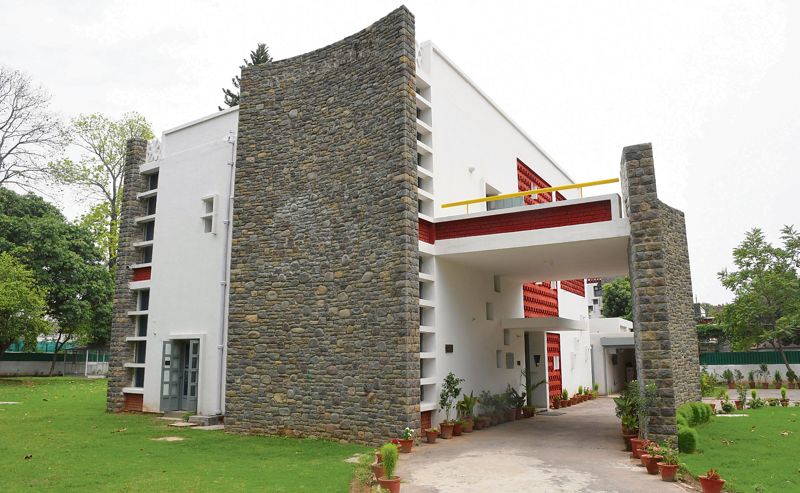Sudhir Vohra I WAS a little more than seven years old in 1963 when my family moved into House No. 58 in Sector 5 in the then new town of Chandigarh. The street had 10 houses, five on each side. All were built and owned by the Administration and occupied by government officers like my father. The street was quite different from our previous residence in Sector 16. Though that was also government housing, there were a few kids around and it had a lot more activity. The ‘guy next door’ was a bachelor architect, Pierre Jeanneret, known as PJ for some odd reason. Those days, there was a 3 feet high brick wall in the front and rear, and only hedges between the five houses on one side of the street. There were trees, but not too big. However, there were no kids my age to play with. The houses were large, but bare. PJ came over often enough. My mother spoke French and he felt comfortable chatting with my parents in the rear verandah of the house, which he had designed. My brothers and I would be around, trying to understand what they spoke about, but we had not been taught French. PJ lived alone in House No. 57. Bansi was his ‘Man Friday’, who cooked, cleaned and did all that was needed to run the house, which was pretty sparsely furnished. There were a few rugs, cots for sleeping and a few writing tables and chairs — all designed and crafted by the team of carpenters who worked with the Administration. The dining table could seat six, but there were very few occasions when it had all chairs occupied. I recall only one occasion when his cousin Eduard Jeanneret, (more popularly known as LC — Le Corbusier, the Raven), was in the house, and also Jacqueline, their niece. LC was a towering and grumpy kind of man — my instinct told me that he was not too fond of children being around, so Bansi shooed me away on the one occasion that I crept through the hedge to visit the two Frenchmen. But PJ was very gentle. On many afternoons, I would crawl around the large study table in the room used by him to sketch, draw and scribble on sheets of white paper. I would be permitted to observe as long as he was not disturbed much. But I was no trouble to him — I was busy observing him draw and sketch; at times reject and crumple a sheet. I observed how he thought in colour, and also in light and shade. I figured out (fast enough) that blue lines meant sanitary pipes and things, red circles and ovals meant where the load of the building’s structure would fall. I picked up a few words in French for all the elements of the buildings he would sketch, and I watched quietly as he drew shadows on the drawings he made. In a few months, I started getting a small sheet of paper and some pencil stubs to keep me busy during my afternoon visits. The pencil stubs were big enough for my tiny hands, and I would sketch whatever I wanted to. He would ask a few questions if he felt I had drawn something which he did not understand, then draw over my drawings with the lovely range of colour pencils he seemed to have in abundant stock. I learnt what and how an architect did while I observed PJ scribble on his sheets. And then, some afternoons, the two Sikh carpenters who helped PJ make models of his buildings would try and coach me, as well as shoo me off if I came too near their tools. I realised much later in my school years how much fun I had, and how much I had imbibed in the two-three years that PJ was a neighbour. He left the house sometime in 1966, and in January 1967, my family moved to a fourth floor apartment in New Delhi’s RK Puram. I recall telling my father how miserable it was compared to our previous abode in Sector 5, which had green open areas on all four sides of the house, and lots of windows and doors opening out on to verandahs with brick jaalis which threw nets of light on the floors and walls. A decade later, when I finished school at 16 and had to plough through options to choose my path of work, I got into the best engineering, economics and architecture colleges in my country. It did not take me long to decide that I wanted to be an architect. Only three of us from the school-leaving batch of 160 boys chose architecture. I realised in 1973 how much of an influence PJ had been: the sets of colour pencils, the crumpled pieces of sketches and the smell of wood when one sharpens the pencils and the scent of crayons. It’s been about 45 years of work now. I am 65 and still enjoy the scent of the pencil’s timber, the mixing of colours on white paper, the joy of building something, and the pleasure of sketching out an idea and watching it grow into a building. And the afternoons in PJ’s room and sketching table remain frozen in my mind. — The writer is a Delhi-based architect and urban planner
From: tribuneindia
URL: https://www.tribuneindia.com/news/comment/jeanneret-our-neighbour-396873



